2025 Volkswagen ID. Buzz First Drive Review
VW's electric van is a modern Microbus for a new generation.
2025 Volkswagen ID. Buzz: What's new? 2025 Volkswagen ID. Buzz: Slow no more 2025 Volkswagen ID. Buzz: Plenty of comfort and cargo room 2025 Volkswagen ID. Buzz: Something old, something new
 Christian Wardlaw
Christian Wardlaw
Steeped in nostalgia, the Buzz is a modern reincarnation of the beloved Volkswagen Microbus, equipped with seating for up to seven people and more maximum cargo space than a Chevrolet Suburban. It's bigger than a typical minivan, too. With available all-wheel drive and three rows of seats, it makes sense as an alternative to the three-row crossover SUVs littering U.S. roads. But the Buzz is electric only, and the driving range is limited.
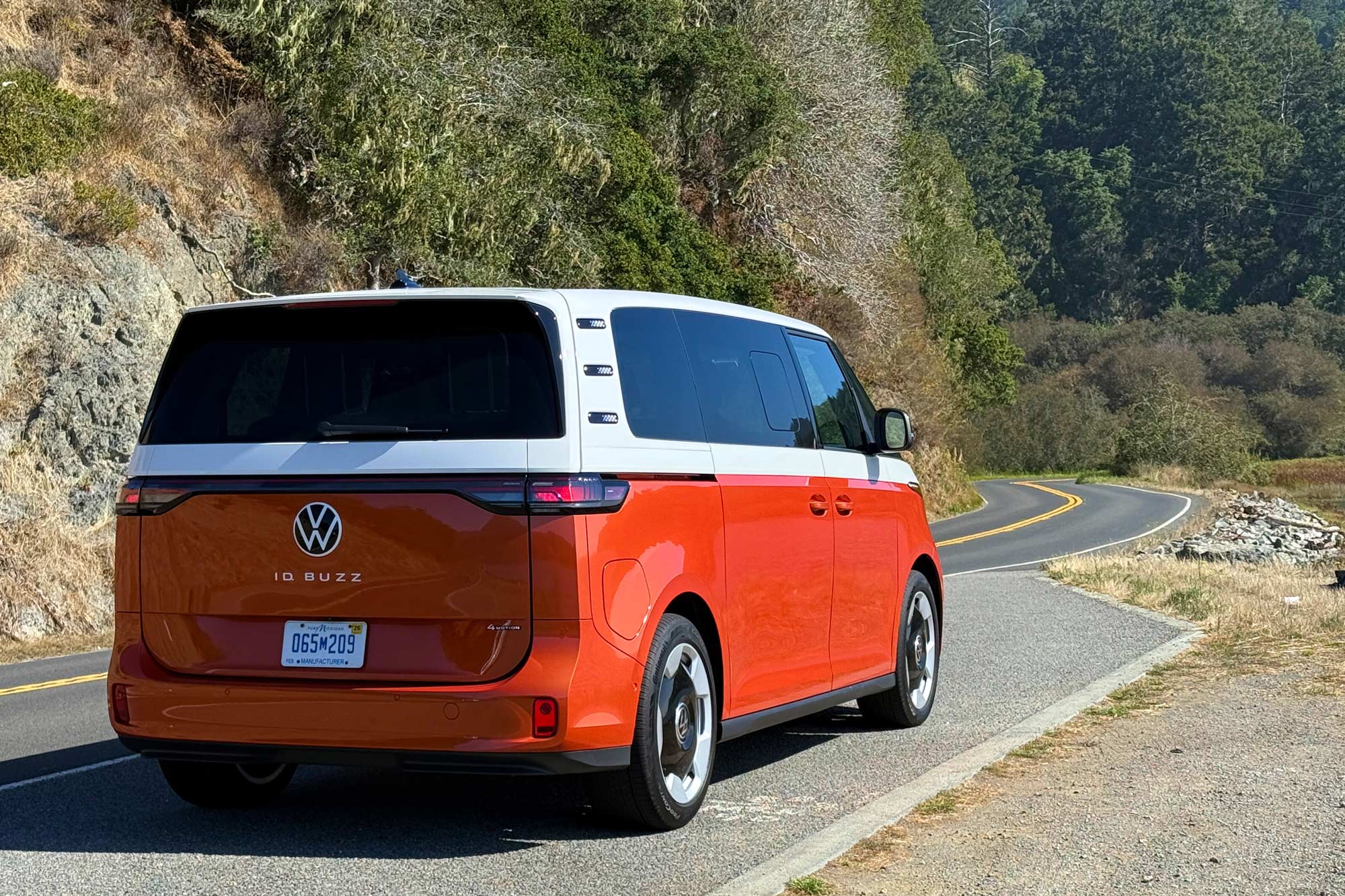 Christian Wardlaw
Christian Wardlaw
The 2025 ID. Buzz isn't cheap, either. It comes in Pro S, Pro S Plus, and 1st Edition trim levels equipped with a single-motor, rear-drive electric drive system. A dual-motor, all-wheel-drive setup — called 4Motion — is optional. Prices range from the low $60,000s to the low $70,000s including the destination charge, and a federal EV credit is unavailable since VW builds the Buzz in Germany.
That price range makes the Buzz more expensive than most minivans and three-row crossovers but less expensive than similarly equipped full-size SUVs. Compared to its closest direct rival, the Kia EV9, VW's new van costs about the same.
I'm a fan of the futuristic Kia, which surprised and delighted me every day of a week-long evaluation. The throwback VW ID. Buzz is a dramatically different take on a similar recipe, and based on a half-day drive in and around San Francisco, I found it equally, if not more, appealing.
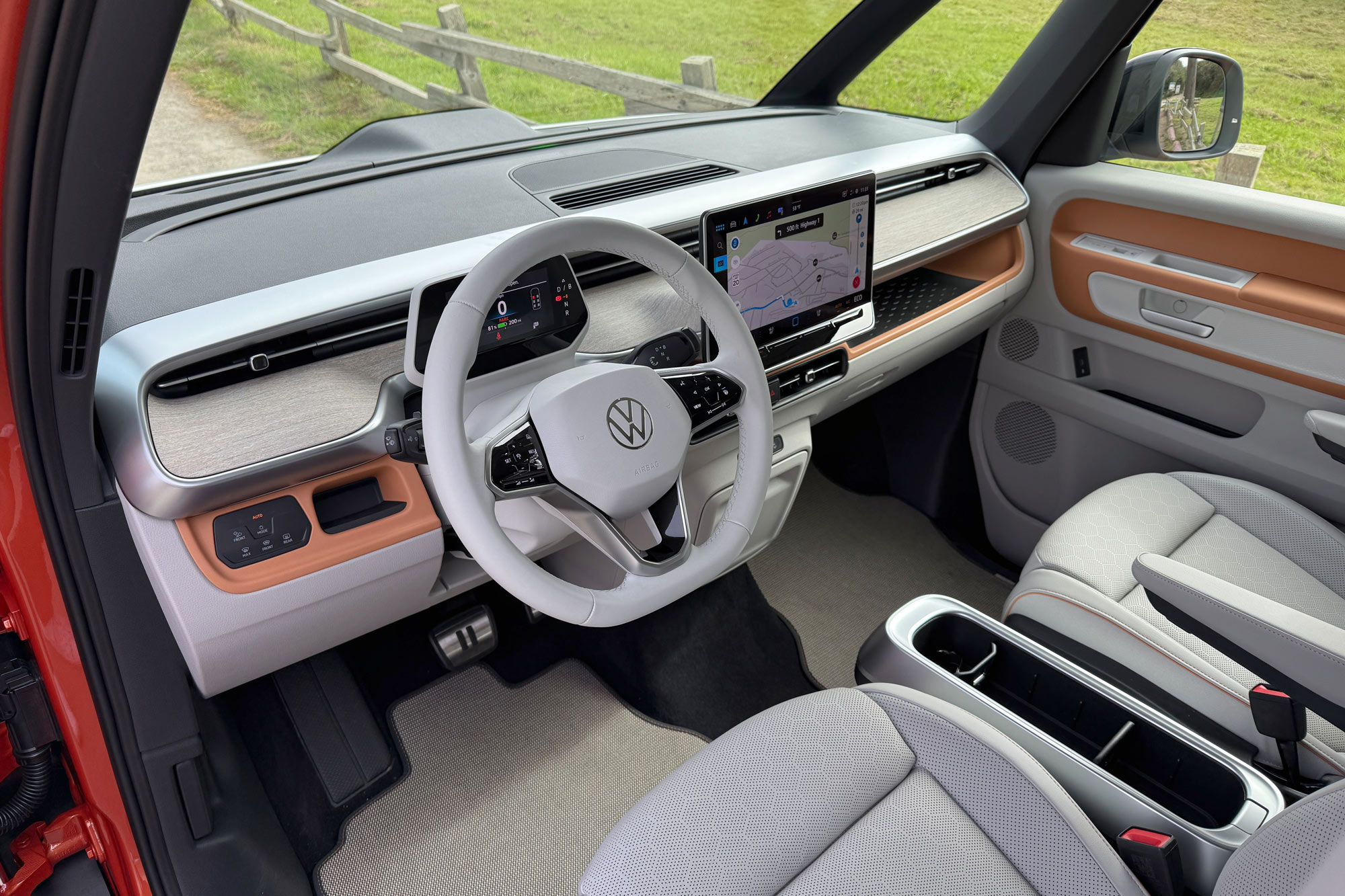 Christian Wardlaw
Christian Wardlaw
Vintage Vibes Paired With Modern Technology
Park a vintage Microbus next to the new ID. Buzz and the differences are stark, yet the similarities are apparent. From the giant VW logos and two-tone paint to the huge windows and rear roof pillar air vents, the Buzz is clearly a spiritual descendant of the Microbus. It even has a standard rear-motor, rear-drive powertrain.
Open any door, and hints of history are evident throughout the modern cabin. You can remove the Buzz Box storage console between the front seats to create a classic bus-style pass-through to the rear seats. The sliding doors' power windows also recall the Microbus, and all three rows give passengers plenty of space and an unobstructed view of the unfolding landscape.
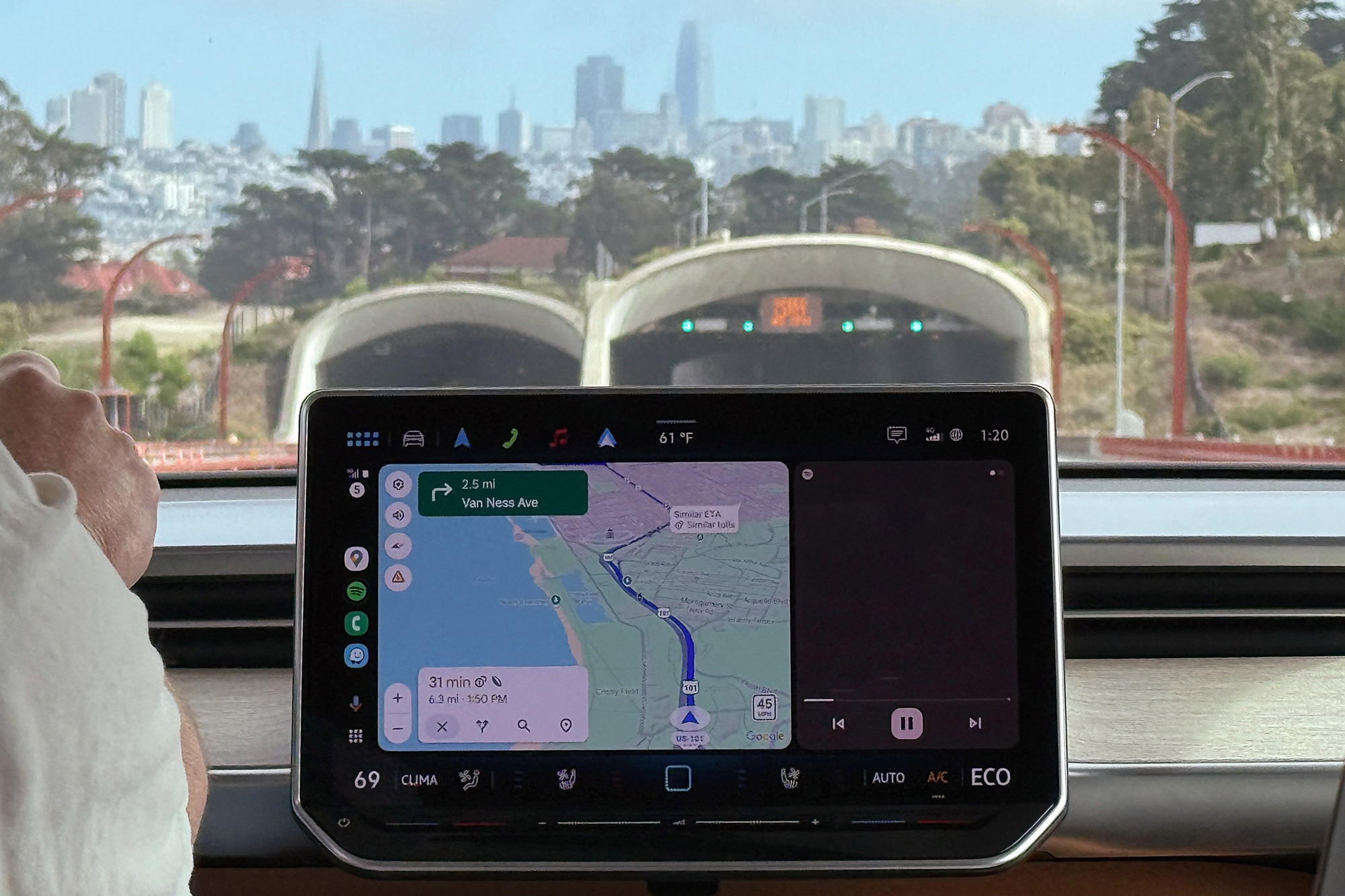 Christian Wardlaw
Christian Wardlaw
While the interior vibe is 1960s, the technological advancements of the 2020s include a 5.3-inch digital driver display and a 12.9-inch touchscreen infotainment system. Overhead, an optional panoramic glass roof features an electrochromic dimming function that changes it from transparent to opaque at the push of a button.
Volkswagen installs a 91-kilowatt-hour (kWh) battery pack under the van's floor. Range measures 234 miles in single-motor Buzz models, while the dual-motor travels 231 miles. Drawing 200 kilowatts (kW) from a DC fast charger, the Buzz recharges from 10% to 80% in 26 minutes. It takes 11 hours to recharge the battery using a 9.6-kW home charging station.
The rear electric motor provides 282 horsepower and 413 pound-feet of torque, giving the entry-level Buzz a claimed acceleration time of 7.4 seconds to 60 mph. That's not fast, but it's not slow.
With 4Motion, VW adds a front electric motor with 99 lb-ft of torque and an increase in total system horsepower to 335. Acceleration to 60 mph takes 6.0 seconds, according to VW.
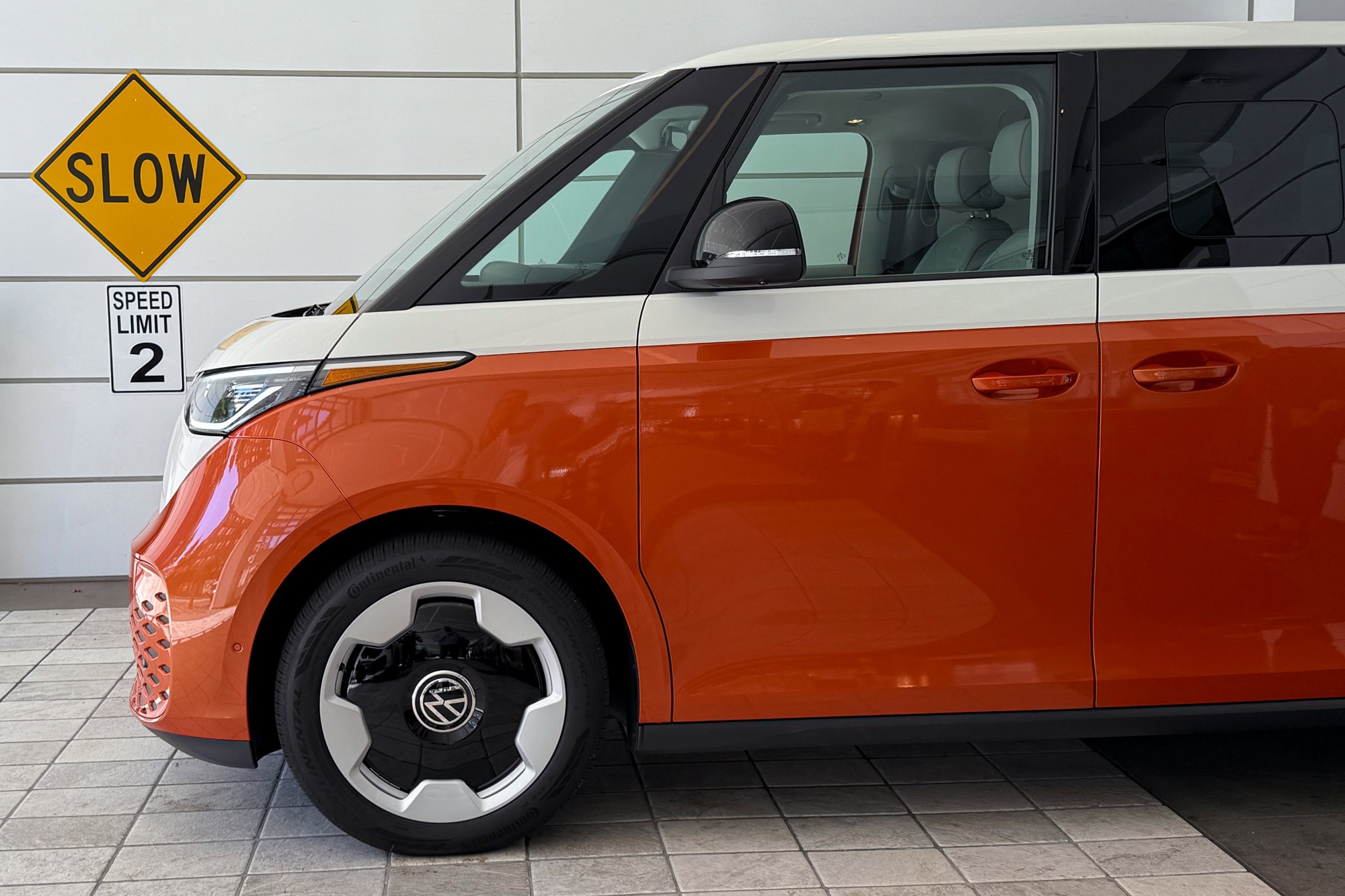 Christian Wardlaw
Christian Wardlaw
Finally, a Bus That Can Accelerate Out of Its Own Way
For this Volkswagen ID. Buzz review, I drove a Pro S Plus equipped with 4Motion and Candy White over Energetic Orange paint, bringing the manufacturer's suggested retail price to $70,540, including the $1,550 destination charge.
Acceleration is swift and silent, unlike the old Microbus. The brakes are effective, too, and easy to modulate whether driving in the city or on winding mountain and coastal roads. Twist the transmission control stalk a second time to activate the natural-feeling regenerative braking mode, but note that it doesn't offer one-pedal driving capability.
As is typical with EVs, the ride feels firm and, at times, choppy as the suspension grapples with the weight of the battery pack and electric motors. With much of the mass concentrated low in the Buzz's platform, it handles remarkably well for a tall and heavy vehicle, but on undulating roads, I felt some unwanted lateral and fore/aft rocking and rolling.
Light but accurate steering and a panoramic view forward make the Buzz effortless to drive, and the front quarter windows, which recall the vent glass on the original Microbus, are helpful no matter the situation. Because it's a box on wheels equipped with standard front and rear sensors and an available surround-view camera, I found it easy to parallel park the Buzz on the streets of San Francisco.
 Christian Wardlaw
Christian Wardlaw
Volkswagen equips the ID. Buzz with its IQ.Drive collection of driver-assistance systems. Travel Assist is among them, pairing adaptive cruise control with lane-centering and lane-change assist to create a hands-on semi-autonomous driving technology. I briefly tested Travel Assist on the winding 101 freeway north of San Francisco, and it performed well in the curves and moderately heavy traffic.
The Environmental Protection Agency says the ID. Buzz consumes electricity at a rate of 41 kWh per 100 miles driven (42 kWh per 100 miles with 4Motion). During my drive, the 4Motion test vehicle traveled 2.5 miles per kWh, translating to 40 kWh per 100 miles and making it more efficient than the official estimate. Unlike mpg estimates, lower is better when talking about EV electricity consumption.
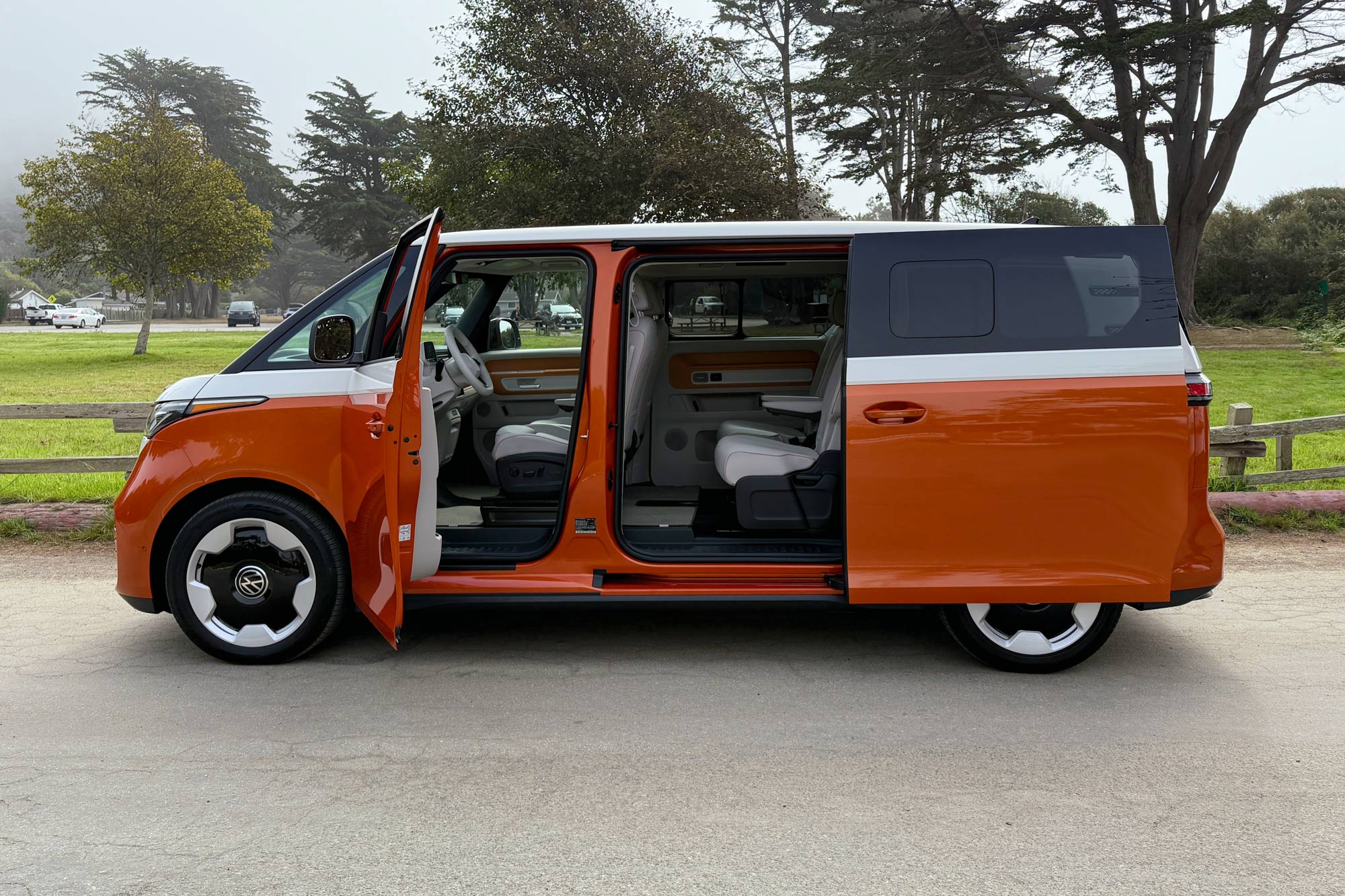 Christian Wardlaw
Christian Wardlaw
Every Seat in the House Is Comfortable
Pairing an iPhone to the infotainment system proved easy, and the technology is intuitive. Touch-sensing sliders control temperature and stereo volume, and the optional 14-speaker Harman Kardon sound system impresses. However, the test model's native voice recognition system proved hit and miss, making the wireless Apple CarPlay and Android Auto connectivity more satisfying to use for navigation.
Every version of the ID. Buzz has 12-way power-adjustable front seats with heating, ventilation, and massage. Wrapped in artificial leather, they're comfortable captain's chairs with adjustable armrests on each side. Between them, the storage console is removable, or you can relocate it for use by the second-row passengers.
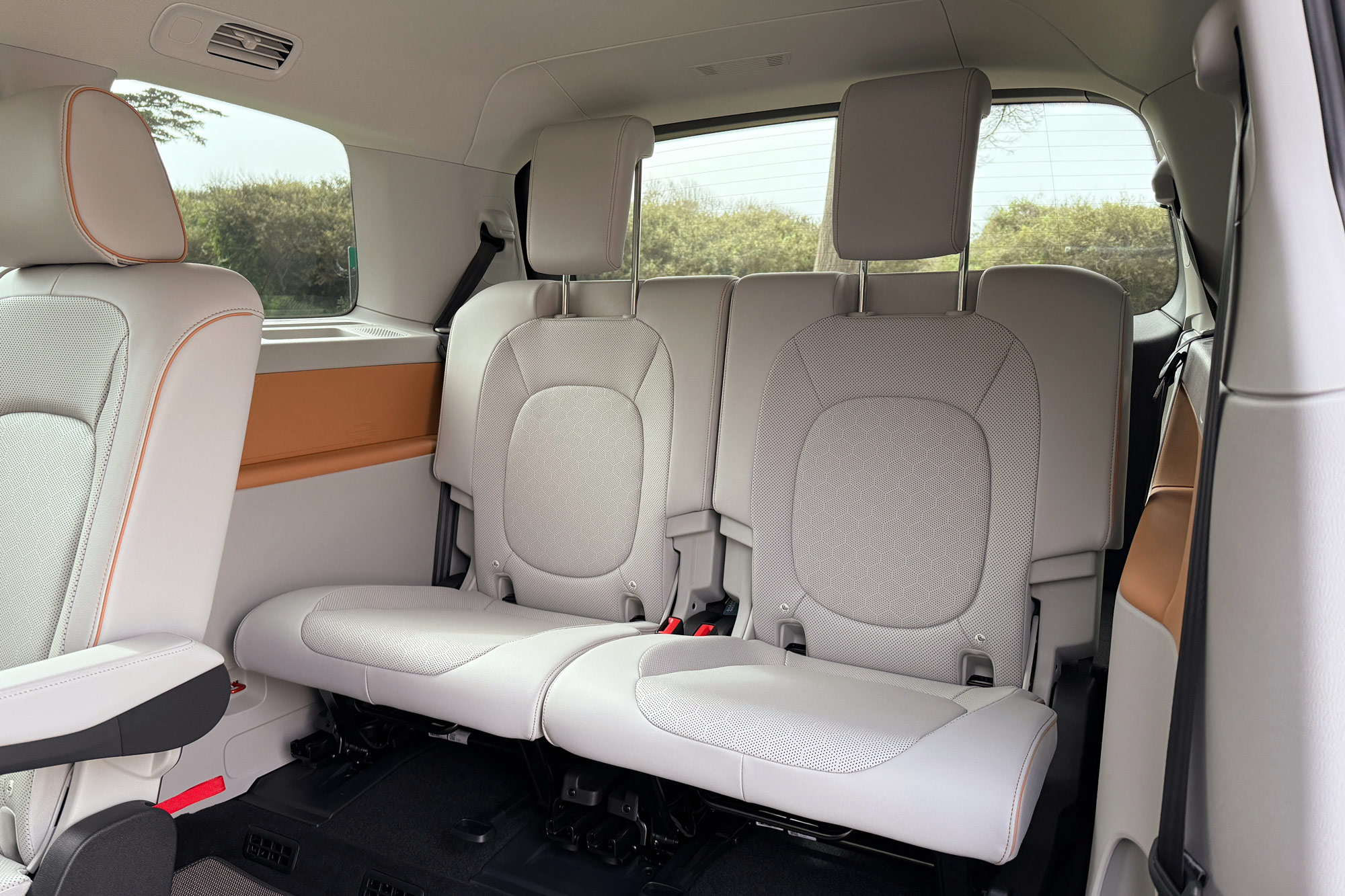 Christian Wardlaw
Christian Wardlaw
A second-row bench seat is standard, and captain's chairs are available. Both rear rows offer plenty of legroom and headroom, and access to the third row is effortless. Unlike many three-row vehicles, adults can ride comfortably back there for hours.
Cargo space behind the third-row seats measures 18.6 cubic-feet, about the same as a three-row crossover SUV. You can fold the third row for more space, and a Flexboard adjustable storage system with storage bins ensures a flat load floor. You can remove the seats and storage bins to create 75.5 cu-ft of cargo space. The maximum volume is 145.5 cu-ft.
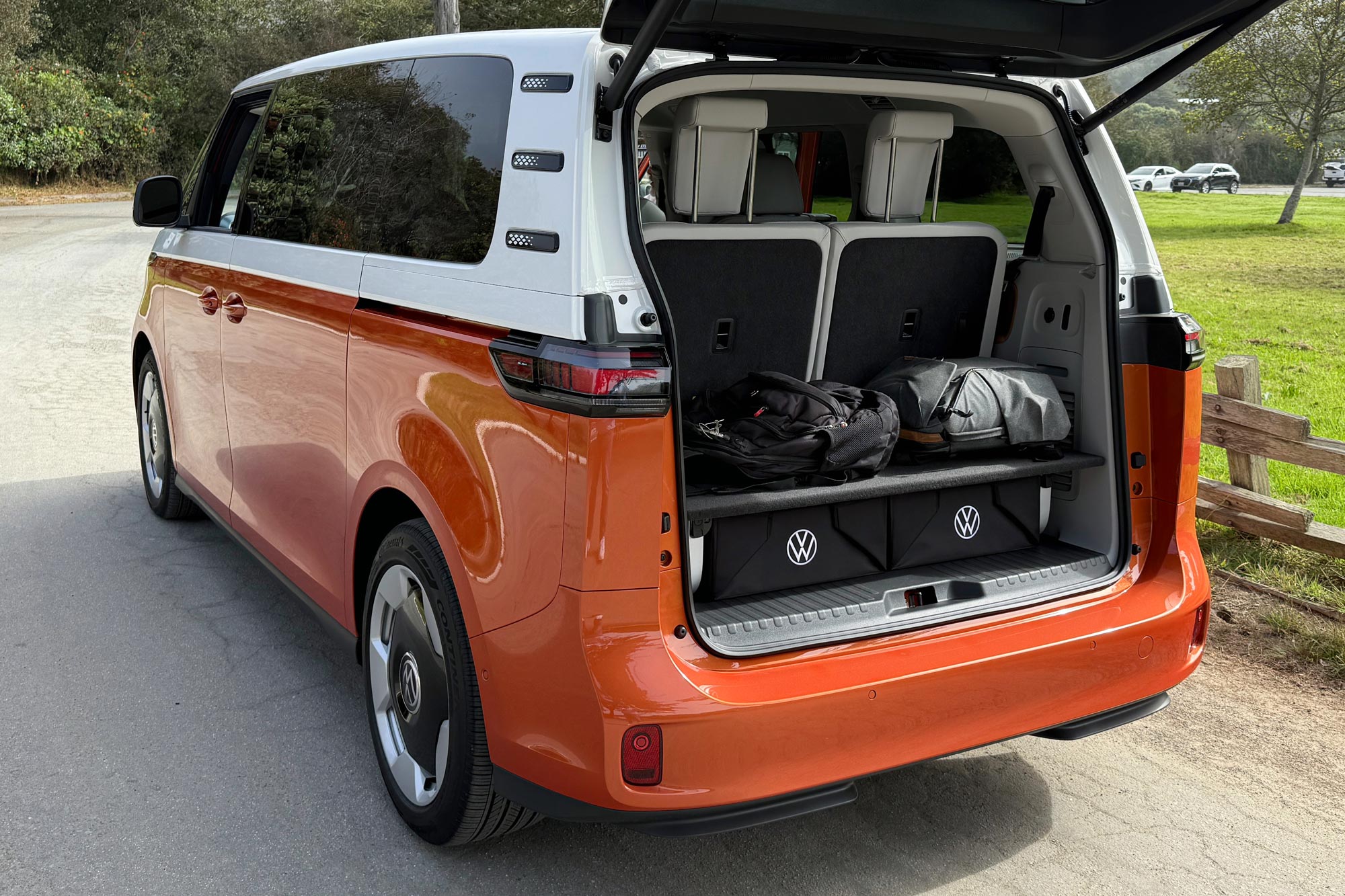 Christian Wardlaw
Christian Wardlaw
Something Old, Something New
Despite the electric-only drivetrain and limited range estimates, the 2025 VW ID. Buzz is undeniably appealing. Something new for people tired of SUVs, the Buzz successfully incorporates something old for fans of the original Microbus. Better yet, it is the first Volkswagen designed and engineered van I've ever driven that quickly accelerates. That means you won't need to slap an apologetic sticker onto the back of it.
Volkswagen provided the vehicle for this 2025 ID. Buzz review and paid for airfare, lodging, and meals during the evaluation period.
Written by humans.
Edited by humans.
 Christian Wardlaw
Christian WardlawChris says his first word was "car." For as long as he can remember, he's been obsessed with them. The design. The engineering. The performance. And the purpose. He is a car enthusiast who loves to drive, but is most passionate about the cars, trucks, and SUVs that people actually buy. He began his career as the editor-in-chief of Edmunds.com in the 1990s, and for more than 30 years has created automotive content for CarGurus, J.D. Power, Kelley Blue Book, the New York Daily News, and others. Chris owns Speedy Daddy Media, has been contributing to Capital One Auto Navigator since 2019, and lives in California with his wife, kids, dog, and 2004 Mazdaspeed Miata.
Related articles
View more related articles